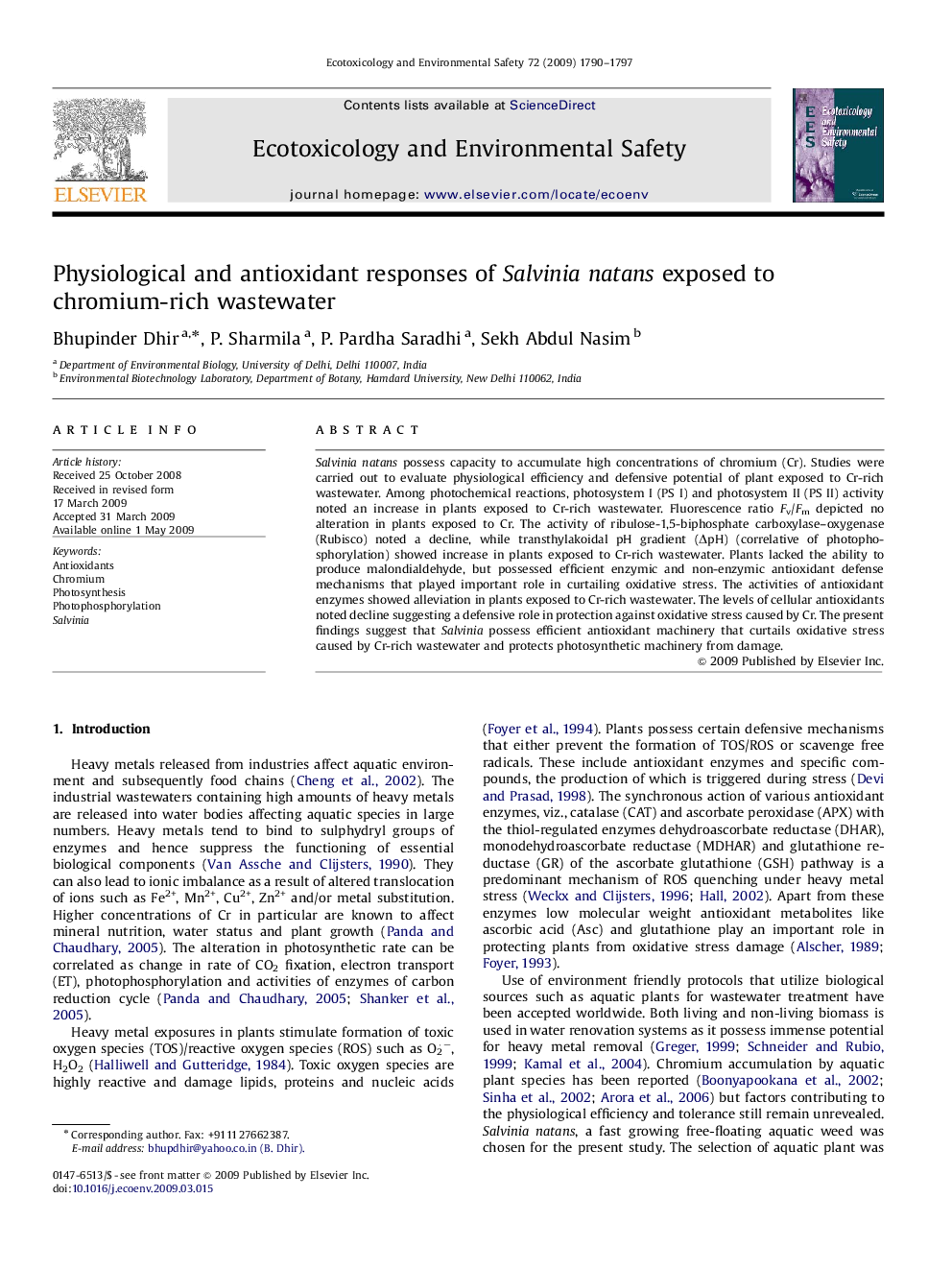| Article ID | Journal | Published Year | Pages | File Type |
|---|---|---|---|---|
| 4421931 | Ecotoxicology and Environmental Safety | 2009 | 8 Pages |
Salvinia natans possess capacity to accumulate high concentrations of chromium (Cr). Studies were carried out to evaluate physiological efficiency and defensive potential of plant exposed to Cr-rich wastewater. Among photochemical reactions, photosystem I (PS I) and photosystem II (PS II) activity noted an increase in plants exposed to Cr-rich wastewater. Fluorescence ratio Fv/Fm depicted no alteration in plants exposed to Cr. The activity of ribulose-1,5-biphosphate carboxylase–oxygenase (Rubisco) noted a decline, while transthylakoidal pH gradient (ΔpH) (correlative of photophosphorylation) showed increase in plants exposed to Cr-rich wastewater. Plants lacked the ability to produce malondialdehyde, but possessed efficient enzymic and non-enzymic antioxidant defense mechanisms that played important role in curtailing oxidative stress. The activities of antioxidant enzymes showed alleviation in plants exposed to Cr-rich wastewater. The levels of cellular antioxidants noted decline suggesting a defensive role in protection against oxidative stress caused by Cr. The present findings suggest that Salvinia possess efficient antioxidant machinery that curtails oxidative stress caused by Cr-rich wastewater and protects photosynthetic machinery from damage.
